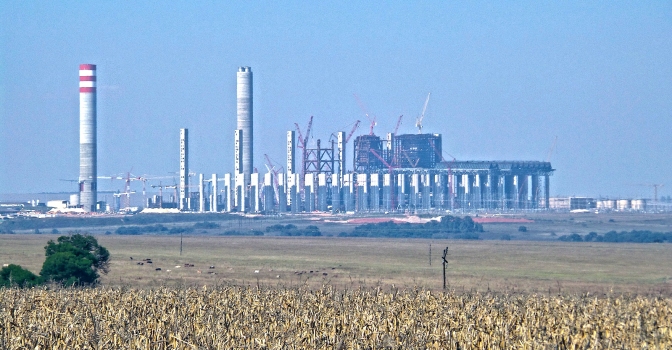The total number of projects in Southern Africa declined by 10.7%in 2019, down from 103 in 2018. In value terms, construction projects declined by 5.7% between 2018 and 2019, from US$125.4bn to US$118.2bn.
The decline in both total value and number of projects stemmed from the completion of projects in the past year such as the Kaombo South oil project in Angola, which was the largest project in 2018.
The region registered 92 projects in total, with a total value of US$118.3bn. The region accounts for 20.4% of projects across Africa, and 23.8% of the value.
South Africa continues to account for the largest share of projects in Southern Africa. The country recorded 37 projects (40.2%) of all 92 projects in the region, while Angola and Mozambique both have 9 projects (9.8%).
Opportunities in power challenges
Energy & Power projects are a crucial part of regional infrastructure plans, with many countries in the region having to endure challenges such as insufficient energy supply and limited energy access.
With 42% (US$50bn) of total project value in the region stemming from Energy & Power projects, this sector has the largest regional share by value.
Related
- Stimulus needed for South Africa’s construction industry
- South African Construction firm Aveng blames weak domestic market for losses
- South African construction industry continue to struggle, survey
While this is testament to regional economies acknowledging their lack of energy infrastructure and the impact it will have on their industrial strategies and economic diversification, the sizable contribution stems from power projects such as Kusile and Medupi power stations in South Africa that are continuously over time and out of budget.
Considering the upcoming restoration of South Africa-based Koeberg power station – Africa’s only nuclear power station – this sector could see more funds allocated in the near future.
The Real Estate sector is the second largest sector in terms of value, accounting for 16% (US$19bn) of project value. The sector is mainly dominated by commercial construction projects, such as the Waterfall City development in South Africa – one of the largest
projects in Southern Africa in value.
While Governments funded the most projects in 2018, China this year is ahead of Government funding at 28.3%, with Governmentfunded projects dropping to only 27.2%.
China funds some of the largest projects such as the New Luanda International Airport (US$6.4bn) and the Caculo Cabaca Hydropower Project (US$4.5bn).
The construction of infrastructure projects is dominated by Private Domestic companies (33.7%), followed by China and South Africa (30.4% and 15.2%, respectively).
Southern Africa’s top 10 projects account for 64% of the total value of projects in the region, a significant portion of the overall projects value. New projects in the top 10 in 2019 include Steyn City Development, Karo mine in Zimbabwe and the SADC Gateway
Port of Walvis Bay in Namibia.
Several Southern African countries have endured infrastructure challenges, ranging from poor transport infrastructure to insufficient energy supply. In line with the region’s infrastructure plans, Southern Africa continues to prioritise the Transport and
Energy & Power sectors.
This is seen through the North-South Corridor (NSC) Road/Rail project, which aims to boost regional integration and increase intra-African trade;39 and the NorthSouth power transmission corridor. One of the projects under the NSC corridor is the Beitbridge Border Post Upgrade project in Zimbabwe.
The Transport sector saw a significant decline (27.3%) in projects between 2018 and 2019. Even so, road network improvements made a significant contribution, with the Transport sector recording the most projects in the region (26.1% of projects).
Real Estate accounts for the second highest share of projects (21.7%). The Mining and Energy & Power sectors follow with 13% and 12%, respectively.
Shipping & Port projects saw the largest increase, with the number of projects increasing from two to nine projects in countries such as Angola, Mozambique, Namibia and South
Africa between 2018 and 2019.
These port projects are expected to improve regional capacity and provide developed port access to neighbouring countries.
Government dominance
Governments own two in every three projects in the region, down from 70% in 2018. The drop in government share was mainly due to completed projects in the past year and increased ownership by other countries.
Both Private Domestic companies and African Countries own 10.9% of all projects, respectively, while Single Countries collectively own 9.8% of projects.
The construction of infrastructure projects is dominated by Private Domestic companies (33.7%), followed by China and South Africa (30.4% and 15.2%, respectively). Southern Africa’s top 10 projects account for 64% of the total value of projects in the region, a significant portion of the overall projects value.
New projects in the top 10 in 2019 include Steyn City Development, Karo mine in Zimbabwe and the SADC Gateway Port of Walvis Bay in Namibia.
Also read
Tanzania now catches up with Kenya in infrastructure projects

